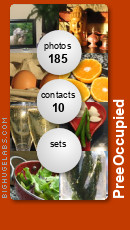Year after year, we would wait for this mutton curry on every Navami (ninth day of Durga Puja).

What was a custom in our neighbour’s family, become a ritual of sorts in ours! To wait for this mutton curry sans onion and garlic to arrive at the stroke of eight every Navami night. Onion and garlic are essentially non-vegetarian ingredients according to Hindu culinary culture. Hence, what must be offered to the Gods and Goddesses must not have these ingredients. Thus started the use of other ingredients, which were “vegetarian” to cook the sacrificial goat!
That night of Navami, Mum would only have rotis made and some salad on the side. The sight of Kanchha, the neighbour’s help with a Borosil bowl of Niramish Mangsho sent all four of us in a tizzy of mutton ecstasy. We would do a quick Joy Ma Durga dance and run to greet Kanchha. We would thank him profusely and carry the warm bowl of mutton curry to the dinner table, where our Mum would be waiting with a hot case of countless rutis. After that there would be 30 minutes of revered silence as all of us got busy eating ruti after ruti with the Niramish Mangsho. And no, no one missed onions or garlic in this dish.



Ingredients for Niramish Mangsho are:
1 kg baby goat meat, bone in
3 tablespoons posto/khus khus/poppy seeds
3 teaspoons cumin seeds
2 inch piece of fresh ginger
2-3 green chillies, chopped
1 heaped teaspoon red chilli powder
1 heaped teaspoon turmeric
10 + 10 cashews
10+ 10 raisins
4 green cardamoms
2 black cardamoms
4-5 cloves
1 inch stick of cinnamon
Pinch of grated nutmeg
2 bay
2 tablespoons melted desi ghee/clarified butter
Sugar
Salt




In the meantime, make a thick, smooth paste with the poppy seeds, cumin seeds, ginger, and the remaining cashews and raisins. Start by dry grinding the poppy and cumin seeds and then add the ginger, cashews and raisins. Add little water to grind. (You can throw in a couple of green chillies too to this paste, to add extra heat.)


Cover and slow cook the mutton for 15 minutes moving it from time to time. Add salt and sugar. Cover and cook again. A mutton dish like this requires patience and slow cooking. Don't hurry up the cooking process.
You will notice the posto mixture turn into a brown hue now. Continue on low-medium heat for another 10 minutes. When the mutton starts releasing ghee, you will notice it line around the sides of the pan. Add a cup of water and mix well.
Cover and cook the meat for another 20 minutes. At this point, you can even decide to pressure cook the meat. I gave it two whistles and removed from fire. Once the pressure releases, open the pan and dry up any extra gravy by cooking the meat on high.







































































































